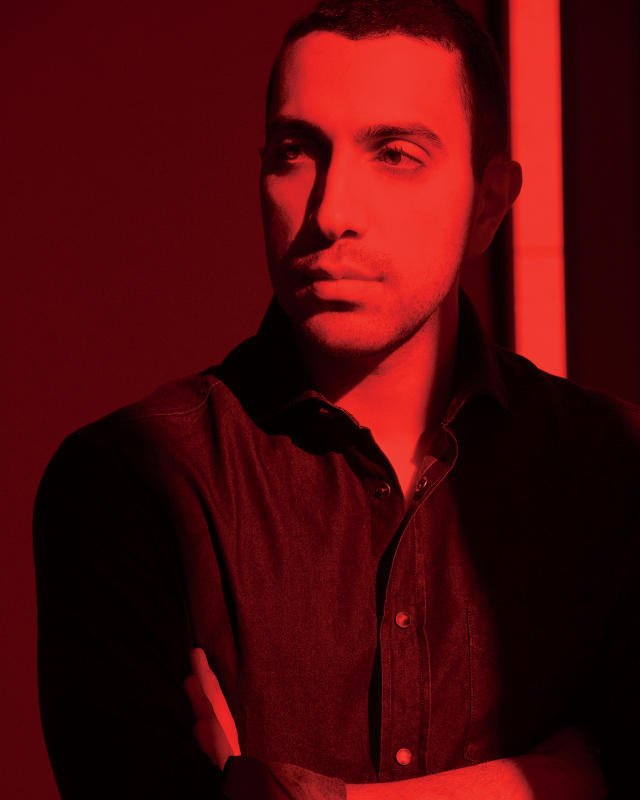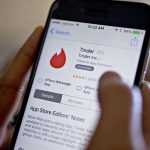Is Controversial Tinder CEO Sean Rad able to develop Up?
After regaining the top job at Tinder, Sean Rad is wrestling with the way forward for his relationship-app company—and with his polarizing persona.
January eleven, 2016
“These are the hottest girls I’ve ever seen!”
Sean Rad—29 and recently single—is bowed over his iPhone, eyes inches from the reveal, completely enamored with the most recent model of his groundbreaking courting app, Tinder. It’s a Monday evening in mid-October at Craig’s, a dimly lit West Hollywood scorching spot where paparazzi track each arriving Uber, and Rad can’t believe how attractive the ladies in his Tinder feed are. He swipes thru never-ending pictures whereas sipping his standard dirty martini, grinning like a child. “What the fuck?!” he says. “that is nuts!”
The deliciously addictive Tinder is as so much cultural phenomenon as courting app—a strikingly simple device that allows you to flick thru images of neighborhood users. Swipe right to register a “like” or left to skip beforehand to the following one. If the opposite particular person swipes right for your picture too, the app indicators both of you to a fit, and from there, both celebration can provoke a dialog—and presumably extra. It’s a transformational interaction version that now results in 1.3 million dates per week. Rad is principally pumped tonight because he’s testing out a new algorithm that’s designed to make more matches, and up to now it’s performing in overdrive. Rad himself worked to refine these modifications, which may give an explanation for why, as I open Tinder on my own phone and start swiping, he reviews my each flip. “Yup, yup, yup,” he says approvingly as i admire a collection of profiles, but then I swipe left on one, and Rad’s elbows bounce off the table. “What!? She used to be scorching!” he yells. “Oh, my God, how did you say no to her?” He grabs my telephone and begins shuffling thru photos on my behalf—picture after picture, complete with operating commentary. “have you ever viewed this many hot women?” he says. “It’s like 5 scorching girls in a row!” He ultimately stops on one. “Wow, she’s gorgeous. She’s a DJ! This might be your wife.”
Tinder has ballooned to 9.6 million day-to-day lively customers, accounting for some 1.4 billion swipes per day. And these aren’t simply teenagers on the lookout for a hookup: A up to date Tinder survey discovered that eighty% of customers are trying to find more than a one-evening stand—a extremely engaged, advertiser-pleasant audience. Tinder is a component of match group, which used to be created as a division of Barry Diller’s IAC and contains different relationship sites, similar to OkCupid and suit.com. In November, IAC spun off healthy team as part of an initial public providing that raised around $four hundred million at a roughly $three billion valuation. Tinder is essential to match workforce’s appeal; as the S-1 SEC prospectus notes, Rad’s app has “risen to scale and recognition quicker than any other product in the courting class” and particularly appeals to young customers. If Tinder were a freestanding operation, according to one latest estimate, its valuation can be greater than $1 billion.
regardless of his firm’s fast success, Rad has endured an strangely bumpy few years, including reams of skeptical press, a sexual harassment lawsuit, and even his transient ouster as Tinder’s CEO. Public scrutiny has been excessive, and a notion lingers that the trade is a few roughly glorified frat home that’s solely devoted to the merchandising of informal intercourse. To Rad, this type of criticism is “whole bullshit.”
Rad insists that his imaginative and prescient for Tinder is much grander than purely facilitating romantic connections. He plans to build it into a strong advertising automobile and subscription service, and also believes it has functions beyond courting. He envisions a “social discovery” platform on the way to connect people in methods other products and services can not. “we have the prospective to take hold of an immense target market as big as Instagram’s or Snapchat’s, but the price we’re giving is so much greater than any of those social apps,” he says. “The fits made on Tinder can exchange lives. The Snapchat picture from two hours in the past—who provides a fuck?”
It’s jolting to listen to the CEO of a massive company speak so bluntly, but Rad is always this unfiltered. In some ways, it’s what makes him an excellent ambassador for Tinder: his adolescence, his vitality, his intuitive take hold of of the app’s core audience. It’s also, in the eyes of some critics, what makes him a legal responsibility. What colleagues describe as Rad’s “raw” leadership fashion has gotten him into trouble at a company the place professional and personal lines are incessantly blurred. nevertheless it has also helped him build Tinder into a phenomenon, and slightly than attempt to recalibrate his character as his firm matures, Rad has made up our minds to embody his rambunctious approach.
As we’re swiping over our drinks, Rad presentations me his Tinder profile, which includes a bio that reads “founder and CEO of Tinder—sure, the app you’re the usage of.” via being so open about his excessive-profile identity, he knows he’s taking a chance, given that his non-public conversations could end up getting leaked. however Rad is repelled by way of the idea of hiding who he is. “i can’t stand fake individuals,” he says. “I’m allergic to people who don’t talk their minds and aren’t proper to themselves. As Tinder has grown, I’ve discovered that i can be myself.”
however can he? Or will he wish to rein in his controversial personality to rocket Tinder to the following stratosphere of growth?

Early one afternoon at Tinder’s los angeles headquarters, Rad and three different executives are gathered around a table in a small, stuffy room with naked white walls and a fake plant. On a section of paper precariously taped to the door, someone has scrawled “CEO administrative center” in blue Sharpie. The miserable atmosphere is transient. the corporate has simply moved into this space in considered one of IAC’s L.A. buildings, on the sunset Strip across from notorious former celeb hangout the Viper Room, and right now decor isn’t a priority. The vibe is pure startup: Tinder T-shirts and hats abound, and there are two varieties of kombucha on faucet within the kitchen.
Rad is carrying gentle-washed denim, a striped blue button-down, and a pair of tan high-tops—a departure from his common darkish James Perse T-shirts. His assistant brings him a Coke as he settles in to look at his crew spar. On the agenda for as of late’s product assembly are five potential new options, which Rad needs to narrow down to 1. They go down the listing, with professionals arguing the professionals and cons. Rad cuts in every 45 seconds, providing blunt feedback. “This isn’t 10x better,” he says of one messaging characteristic; “this is a recreation changer!” he exclaims of every other. “These conferences can get heated,” cofounder and product VP Jonathan Badeen tells me later on. “while I’m head of product, Sean’s very a lot the pinnacle of product. He’s the large-concept man.”
An hour later, the staff has nixed best one of the five choices. however that’s growth: Rad tells me later the meeting was once “extra creative” than average, and that the focus is normally on the “million and one things we now have to urgently get carried out” within the brief time period. although Tinder’s swipe-to-like thought appears virtually ludicrously easy, “You’d be bowled over when you knew how a lot time we nonetheless spend on the swiping physics,” he says.
in the mean time, Rad’s center of attention isn’t just on making improvements to Tinder’s core performance, it’s on the right way to broaden the app’s attraction and generate revenues that match its outsize cultural affect. Launching new features is a big part of that strategy. Three weeks previous to lately’s meeting, Tinder offered tremendous Like, which allows you to push-notify individuals that you simply’ve favored them—a virtual, flirty nudge. Early checks were promising. users are three times extra prone to suit with someone they super liked, and on moderate these conversations remaining 70% longer.
tremendous Like is incorporated as a part of Tinder Plus, the company’s top rate subscription carrier, which is a key part of its monetization technique. the basic app is free, but for a monthly price, Tinder Plus gives contributors unlimited swipes and five super Likes per day (nonsubscribers get only one tremendous Like and a finite collection of swipes each 24 hours), the option of undoing an unintentional swipe, and different options. charges begin at $9.99 monthly, and Tinder is brazen sufficient to cost $19.ninety nine for any person 30 or older, like surge pricing for locating your soul mate. “How so much would you pay me to satisfy your spouse?” Rad says, justifying the worth proposition. “Ten thousand dollars? Twenty thousand dollars? Some folks would almost certainly give me their complete net worth.” Tinder also makes cash from advertising, of course, with companies similar to Bud light paying more than $1 million per marketing campaign for placement in users’ feeds.
along with super Like, Rad spearheaded a major overhaul of the app that rolled out in November and contains the brand new algorithm. customers can now create handles and net-based profiles, and in addition add training and profession information to profiles. Tinder makes use of that knowledge to pair couples in line with compatibility relatively than just spitting out photographs at random. It’s all a part of a push towards making Tinder a full-featured social network. Rad and Badeen say extra instruments are on the way in which that will lend a hand facilitate conversation and in-person experiences.
currently no different app is as successful at helping strangers meet in the real world, and it’s easy to consider ways in which Tinder’s interface might be helpful. LinkedIn has built a industry valued at $32 billion out of connections and verbal exchange, but as Rad points out, “LinkedIn sucks for assembly new folks. It’s in truth unimaginable to meet people on LinkedIn.” imagine a Tinder for trade, the place it’s worthwhile to network with a simple swipe. Rad ticks off a listing of other purposes Tinder may go after, together with local recommendations and experience-discovery tools.
It’s a seductive pitch; it’s also doubtful how severe Rad is about diversification given how so much room for boom nonetheless exists in the courting market. He boasts that he could dream up 5,000 ideas that he may “assure at least one hundred,000 users” would undertake, however “that’s pointless. The exhausting factor is figuring out what works for ninety% of our audience.” For Sam Yagan—who served as suit workforce CEO after selling OkCupid to Diller for $90 million in 2011 and is on Tinder’s board—it’s about staying focused. “will have to we do Tinder for industry, Tinder for endeavor?” he says. “I don’t wake up every morning pondering that this relationship factor is simply too small.”
these with regards to Rad describe a magnetic quality that appears as if it has an on/off swap. it can be discomfiting in the event you don’t recognize him. Rad, who has darkish eyes and an intense seem to be similar to a younger David Blaine, is prone to disappearing into his telephone in case you don’t maintain his attention, even all through a one-on-one conversation. but he may turn on a rakish appeal. At one point, Rad describes a latest interplay he had at the big apple’s Soho home. After overhearing four younger women discussing Tinder, he slid over to talk. to start with, he didn’t even identification himself as the company’s CEO. “people are nervous to speak to a lady or a guy,” Rad tells me. “I never had a problem with it.”
Rad’s off-kilter charisma traces back to Bel Air, California, where he grew up in a large, rich household. His folks, Iranian immigrants, own an electronics manufacturing company that works with behemoths like Samsung. Rad recalls raucous Friday night time dinners with aunts and uncles and cousins and their “large egos and voices. You needed to discuss up—no person was afraid to name bullshit on something you mentioned. There wasn’t all the time room for my voice.” He studied business at the college of Southern California but dropped out after two and a half years, in 2006. moderately than subscribe to his domestic’s firm, Rad headed out on his own. “i wanted to be grasp of my own fate,” he says. He created two successive startups, certainly one of which, a social media advertising and marketing firm known as Adly that helps celebrities and influencers monetize their brands, turned into a minor success (Rad has considering that bought his stake within the business).
In early 2012, he landed as a basic supervisor at Hatch Labs, a new york–based incubator funded partly through IAC. Hatch cofounder Adam Huie remembers Rad’s sly self assurance all through his interview. When Huie asked Rad how he would construct out one of the vital incubator’s merchandise, “Sean was similar to, ‘I’ll determine it out.’ Wait, what? but what expertise would you use? ‘Don’t concern! I’ll get it done.’ ” Huie remembers Rad as being “half of pompous, however 100% tremendous-convincing.” He bought the job.
In his first week, Rad learned he’d be competing in an incubator-vast hackathon. In a reply-all message responding to an e mail welcoming him to the incubator, Rad wrote, “Can’t wait to meet you all at the hackathon—after I damage you guys! I’m gonna win this factor!” He was proper: Rad and his associate within the competitors, Hatch engineer Joe Munoz, triumphed with an concept for a carrier that might let users click via images of doable suits—a tough version of what would eventually turn out to be Tinder.
Rad was once by way of no stretch Tinder’s sole creator; a team of designers, engineers, marketers, and industry leaders deserve credit for building out the app in the ensuing yr, particularly Jonathan Badeen, who added the swiping mechanism. Justin Mateen, Rad’s easiest good friend, started working with the company later that year (he additionally commenced dating Tinder worker Whitney Wolfe). Rad’s “undying belief” in Tinder pushed the crew ahead, says Ryan Ogle, an engineer who later turned into CTO. “Sean was once all the time like, ‘this is going to be the greatest thing ever! we are going to alternate the world!’ ” Ogle recalls with a laugh. “Tinder was once nothing in point of fact at the time, and that i was once like, ‘ok, Sean, we’ll see. You’re really excitable.’ ”
When it started out rolling out at school campuses in 2012 and right through 2013, engagement took off, hitting a hundred,000 users by way of February. Rad believes Tinder caught on as a result of it “removed the rejection and fear” from dating—you’re only told while you get a suit. He likes to assert it’s akin to locking eyes with any individual at a bar. through 2014, Tinder had reached 350 million swipes per day.
throughout the company, although, things were not going as easily. Tinder ran into challenges as the workforce and product scaled. junk mail and bots commenced to weigh down the app, and its technical infrastructure struggled to maintain up. in the meantime, IAC, recognizing Tinder’s rising influence, was angling for extra control. The phrase bandied about internally used to be that these were “excellent problems to have.” that’s, if the servers crash, that’s a excellent drawback, as a result of it manner engagement is booming; if IAC is fighting for extra possession, that’s additionally excellent, as a result of it method Tinder is efficacious. however at a certain point, you have to renowned that problems are issues they usually need to be dealt with. For any startup, says Ogle, “for those who don’t restoration [these kinds of issues], you’re going to kill this standard thing you created.”
in all probability Tinder’s biggest “just right drawback” used to be cultural. The startup has always had a piece-laborious, play-laborious atmosphere. “It was this tremendous-open, fantastically chaotic situation the place everyone is close,” one former worker tells me. “folks would hang out after work, drink collectively, work out together. It had a heartbeat.” Arguably, that surroundings used to be really useful given that the corporate’s sole product was built around the thought of connecting individuals. however it also proved to be an HR nightmare. the connection between Rad’s best possible friend Mateen and Wolfe (by that point a marketing VP) ended badly, and their breakup spilled over into the office. That spring, Wolfe and Tinder parted ways, and in June she filed a lawsuit against the company accusing executives of denying her function in Tinder’s founding and fostering an setting opposed to women. The go well with was once settled out of court that September for around $1 million, and no longer long after, Wolfe started a competing courting app known as Bumble.
as of late Rad acknowledges that he mishandled what became an extraordinarily public dispute. He says he will have to have done a greater job preserving Mateen and Wolfe’s relationship issues out of the place of work, and that being pals with each of them made the location way more tough. “In a startup, everyone is close,” he says. “It’s hard to carry them guilty, as a result of how are you going to tell [friends], ‘hi there, you fucked up’?” (Mateen, who resigned final September however continues to be a detailed adviser, didn’t respond to requests for remark; Wolfe says, “there’s no bullshit in what I’m about to assert: I in truth do want Sean smartly and in reality hope for his endured success.”)
The expertise devastated Rad, and it contributed to a growing perception that Tinder’s culture was once complex. For a high-profile firm trying to establish itself as a serious business-world contender, this used to be a subject matter. across the time Wolfe filed the lawsuit, Tinder’s board began speaking about bringing in a extra pro govt to supervise things. suit group CEO and Tinder govt chairman Greg Blatt, the previous head of fit.com, remembers that Rad used to be already struggling to set a constant agenda for his employees, and Blatt says he didn’t need to leave Tinder’s future as much as “full trial and mistake” as Rad realized how to lead. “Some CEOs are indecisive and it takes them a while to get to a choice,” says one executive who works carefully with Rad at Tinder. “Sean’s style is the precise opposite: He’ll make an awfully quick decision after which he’ll exchange his thoughts later. Being the visionary—that’s a key component of being CEO. but it’s just one piece.”
Blatt, Yagan, and Rad talked about the scenario over the route of a few months. “there have been instances Sean used to be just right [with bringing in someone to replace him as CEO], and there were times the place he wasn’t,” Blatt says. Rad contemplated quitting, but determined towards it as a result of he would have felt responsible abandoning his group. finally Rad delivered an ultimatum to the Tinder board. “You guys have two selections,” he recollects telling them. “that you would be able to take a possibility on me and train me to be the leader that I want to turn into. Or you could say you’re not willing to take the danger and commit to that work—and in finding any person else.”
They found any individual else. In March 2015, Tinder appointed Christopher Payne CEO, with Rad staying on as president. A veteran of Microsoft and eBay, the brand new chief was brought in to, as Payne puts it, “ratchet up the extent of accountability. the company had gone thru a tumultuous period.” One would predict Rad to greet Payne with skepticism, however former and present employees (together with Payne) say that he could now not were extra supportive. “I was incredibly upset,” Rad says. “however I was once an immense boy about it. It used to be tricky for me personally, but I needed to believe the board. It was once a choice we made together.” at the first all-arms assembly, a source who was once there describes Rad as being routinely enthusiastic: “this is taking place! Chris is beginning, and also you’re gonna love him!”
Rad saved his head down working on product and advertising, while Payne tried to set a extra structured firm technique. “It’s so much more uncomplicated to work in a world where it’s extra laissez-faire,” Payne says. “Like, ‘We’ll do this! We’ll do that!’ ” Taming Tinder’s freewheeling atmosphere and undisciplined means proved challenging. Payne, then forty six, struggled to fit in, partly as a result of he wasn’t the goal demographic. “I was once for sure not a person of Tinder [before I joined the company],” Payne says. “I’ve been married 18 years!”
And while many sources tell me they admire Payne, there have been conflicts that went deeper. One recollects how when Payne decided to let a handful of workers go, he made Rad do the firing, which strained their relationship. Payne never totally earned the enhance of the executive group, a situation that was once exacerbated, in keeping with a source with reference to the corporate, via rumors that he needed to move Tinder to San Francisco (Payne says he had no intention of relocating). “a brand new level of discipline was imposed, and that certainly ruffled some feathers,” says Blatt. by way of August, five months into Payne’s tenure, the board had ousted him. “It’s now not unless the true orchestra is playing that you understand whether things are gelling,” Yagan says.
not directly the board determined that Tinder’s distinctive tradition needed Rad at the helm. just months after shedding his job, he abruptly found out he was getting it again. “For better or for worse, my identity is tied to this company,” he says. “i’ve way more to lose [than anyone if Tinder fails], so why would I chance any person else fucking it up?” On August 12, 2015, Rad as soon as again walked into the Tinder office as the company’s CEO. As he came through the door, employees met him with a standing ovation.

Two months into Rad’s comeback, what’s remarkable is how little Tinder’s tradition appears to have modified. The cofounder nonetheless runs his company with a type of amped-up kineticism, encouraging what CTO Ryan Ogle describes because the “wild spirit” of the early days and letting things run “simply sufficient [on the edge] with out devolving into chaos.” That approach has helped Tinder keep nimble. however more than one company executives inform me that no official coverage has been put in situation to assist prevent any other scenario like the antagonistic-place of business lawsuit. (Blatt says mum or dad firm IAC already had applicable HR policies even before the suit.)
And for a corporation that’s working to maneuver beyond its bro-ish picture, Tinder employs exceedingly few girls. “Tinder from its very inception was once meant to be a female-friendly application,” says Badeen. “We see feminine customers as most likely our most necessary.” To get a girl’s point of view, Rad tells me he continuously calls his feminine assistant into meetings. And in the 4 conferences I attend, all of which are crammed completely with men, I notice an almost comical habit they have got of citing anecdotes from girlfriends or ex-girlfriends for a female perspective. on the time of my talk over with, the corporate employed only one feminine executive (they’ve since hired two extra). in any other case, Tinder’s male govt team is by itself. Rad compares the dynamic to the rom-com What girls want, where Mel Gibson has the ability to read girls’s minds.
As unhealthy as all of this seems to be, Tinder’s defenders argue it’s perfectly standard in startup land, and just about each present and former female worker I discuss to praises Rad’s management. Most say they love Tinder’s tradition regardless of its dude-centricity. “clearly we deal in the business of gender, so folks care what the women of Tinder assume,” says the company’s feminine on-staff sociologist, Jess Carbino, whom Rad recruited to do user-habits analysis after they matched on Tinder. “It’s an awfully pro-women culture—we’re not wallflowers cowering within the nook at all. I don’t feel bad ever announcing, ‘hello, I don’t suppose this is right for ladies.’ ”
in general, executives appear to believe that Tinder’s uninhibited fashion is an crucial a part of its success. “i feel like there’s nothing i will be able to’t say at this company,” says Phil Schwarz, who changed Mateen as CMO. “The minute that open communicate goes away, you’re lifeless.” Rad argues that bluntness is essential to how he offers feedback. “For a time frame [following the lawsuit] I felt suffocated, like I couldn’t discuss,” he says. “however i’m who i am, and i’m happy with that. If people don’t see it, they are able to go fuck themselves.”

The afternoon after suit group’s IPO, Rad is sitting at a quiet bistro close to IAC’s big apple headquarters, making an attempt to provide an explanation for the unexpected loopy flip things have taken. “The earlier forty eight hours were in truth the worst two days of my complete life,” he says.
past that morning, Rad was on the Nasdaq to help ring the hole bell. Surrounded by way of dozens of in shape team colleagues, Rad, carrying a black suit and a tremendous smile, clapped loudly and exchanged a high-5 with Badeen as confetti shot into the air. It must’ve been a joyous moment, the fruits of virtually four years of work. as an alternative it used to be “bittersweet,” Rad tells me. “What a day lately, but what a fucked-up week.”
Rad’s lack of tact had once again landed him in bother. The day ahead of the IPO, in a now-notorious interview with the London evening usual, Rad used to be quoted discussing more than a few un-CEO-like themes, boasting that a supermodel had once begged him for intercourse and—in a single widely mocked moment—misusing the term “sodomy.” “We’re going to be fired,” his publicist jokes within the article. To which Rad replies, “What? Why?”
The piece wasn’t just embarrassing; it risked angering the SEC, which restricts corporate executives from ensuring sorts of public statements prime as much as an IPO. The article stated engagement figures that dramatically range from what’s in suit crew’s SEC prospectus. Hours after the article came out, fit staff replied with the extremely bizarre move of submitting a remark with the SEC that disavowed itself of Rad’s comments—and of Rad himself. He “shouldn’t be a director or government officer of the [Match Group] and was once now not approved to make statements,” the company wrote. It used to be a brutal public spanking.
at the restaurant, Rad is unshaven and a little haggard, having taken a red-eye to make the hole-bell ceremony. He has come in an instant from a frank assembly with Blatt, who he says has been extremely supportive (the two males stood subsequent to each other for a photograph after the ceremony, which may be interpreted as a vote of confidence). Over sugar-loaded espresso and a salad, he tells me he wants to explain what came about.
I come to a decision to only come out and ask Rad the apparent question: Is he going to lose his job as CEO of Tinder? once more? “No, no, absolutely now not,” he says. “I promise.” Rad, who barely touches his meals, is more careful than basic, constantly jumping on and off the document. He evidently feels burned by the contemporary unhealthy press. “just please don’t fuck me,” he says at one level. At any other he tells me, “I don’t be aware of what I’m allowed to say. I’m studying now.”
Rad insists that within the interview some of his extra explosive rates have been taken out of context (an evening standard editor says the publication stands by its story). “It’s fucked up, because I’m coping with all of these stereotypes,” he says. “as a result of I’m a a success man in tech I must be a douche bag. as a result of I run a dating app I have to be a womanizer. at the comparable time, I fucked up. I will have to be aware of better as a CEO.”
That flash of perception suggests he could now adopt a picture extra in line with the top govt of a scorching firm with big plans and enthusiastic traders. Is Sean Rad ultimately able to grow up? well . . . maybe. though he describes the incident as a “take-heed call,” he additionally says that “it’s now not that I’m ever going to stop being myself. It’s that I’ve received to get better at framing what I’m trying to say. My duty as a CEO—and to myself—is to continue being myself. I’ve bought to do higher. because these fucking previous few days have been a distraction. What has actually sunk in is that I want to depart very little room for misinterpretation of what I’m seeking to say.” He says doing that newspaper interview was “irresponsible” and that “i will never put myself in that position again.” in relation to running his business, Rad appears much less sure that issues need a rethink. “You saw my model—that’s how I all the time communicated with the team,” he says. “the only thing that’s changed is i am extra clear about what i would like and who we’re as a company.”
Rad takes a final sip of espresso and insists on getting the check (“Greg is buying it,” he jokes). We stroll together to the restaurant’s front door, where he provides me a hug. “Promise me, please, if there’s one thing [I said that] you assume goes to ruin my lifestyles, just name me,” he says. “provide me a possibility to make clear.” The CEO says goodbye, then walks slowly across the road toward the IAC building, his head buried in his cellphone, his fingers madly tapping.
fast company , learn Full Story
(26)














